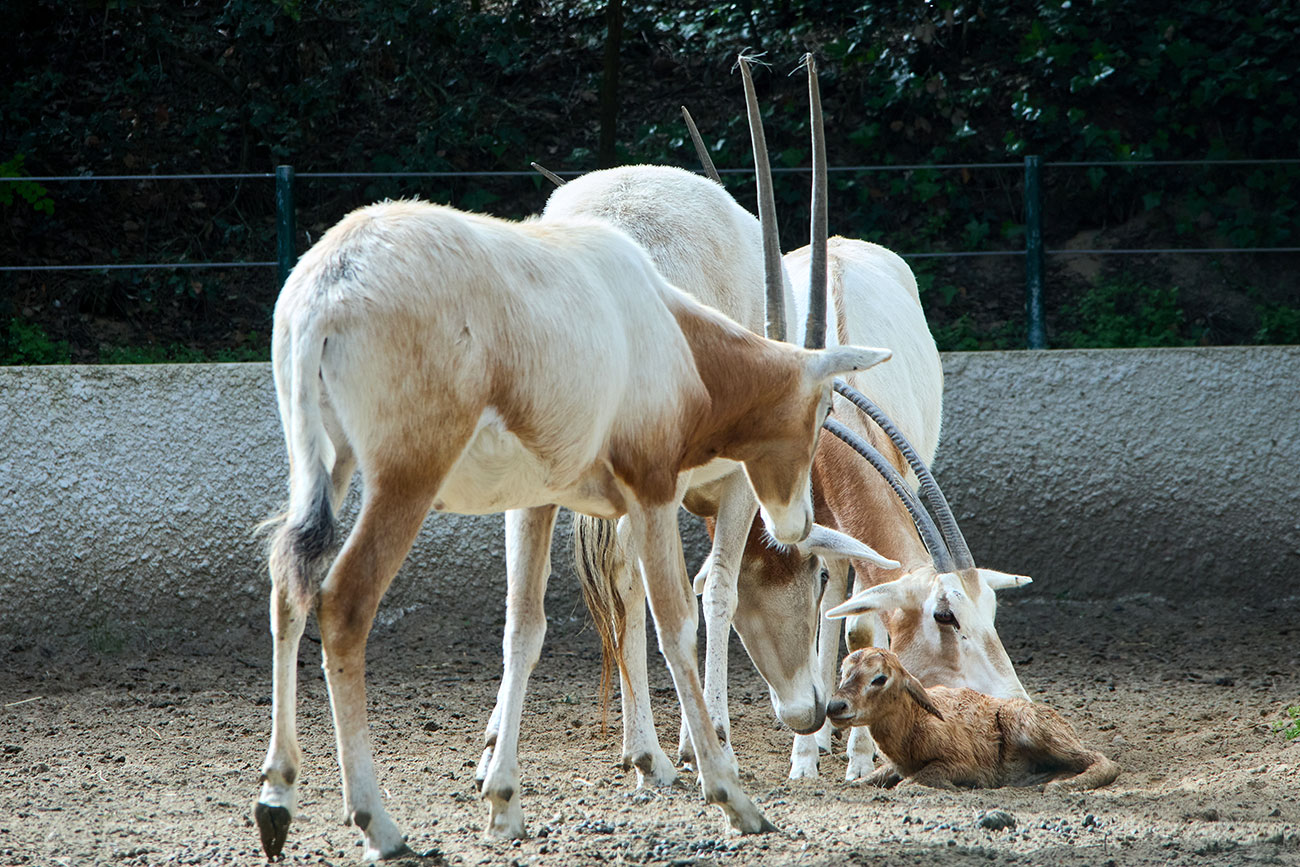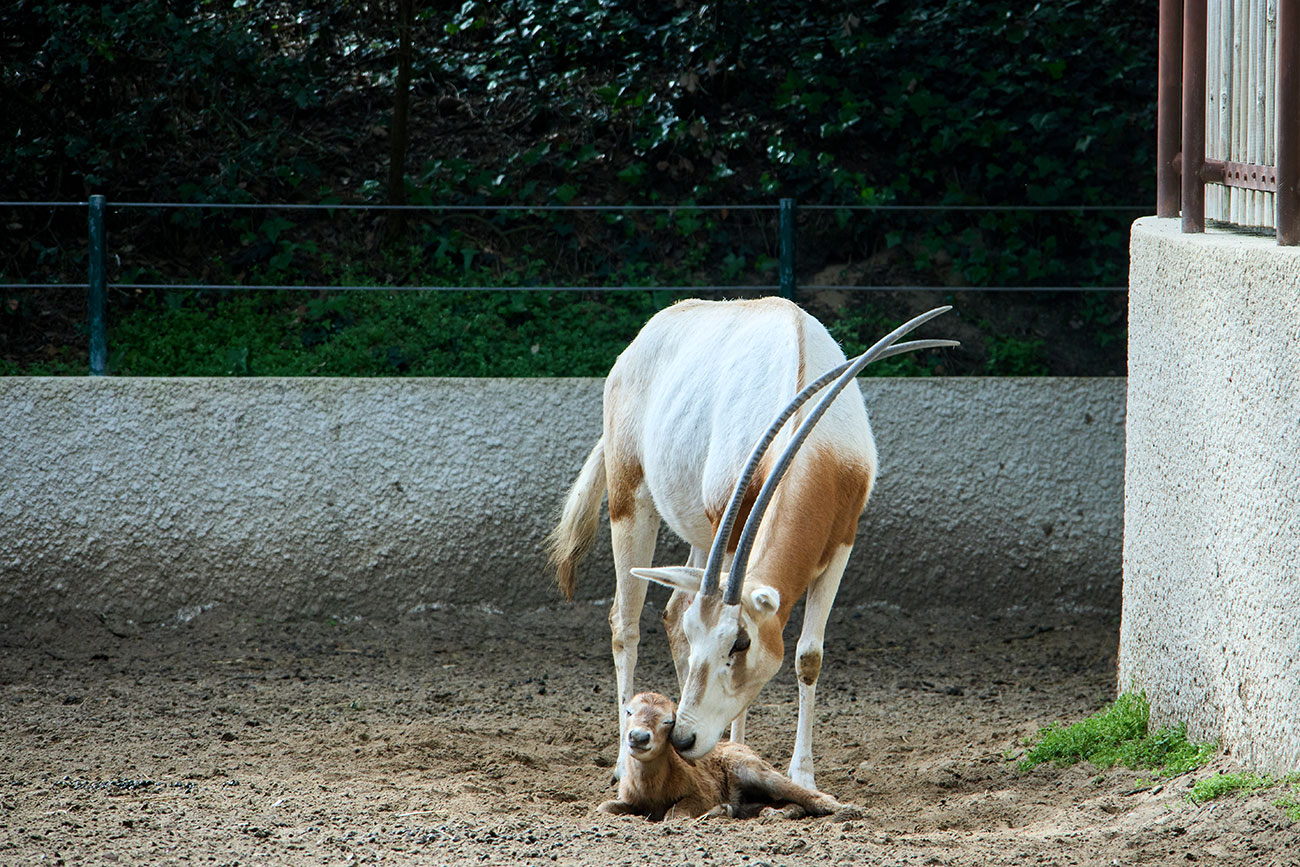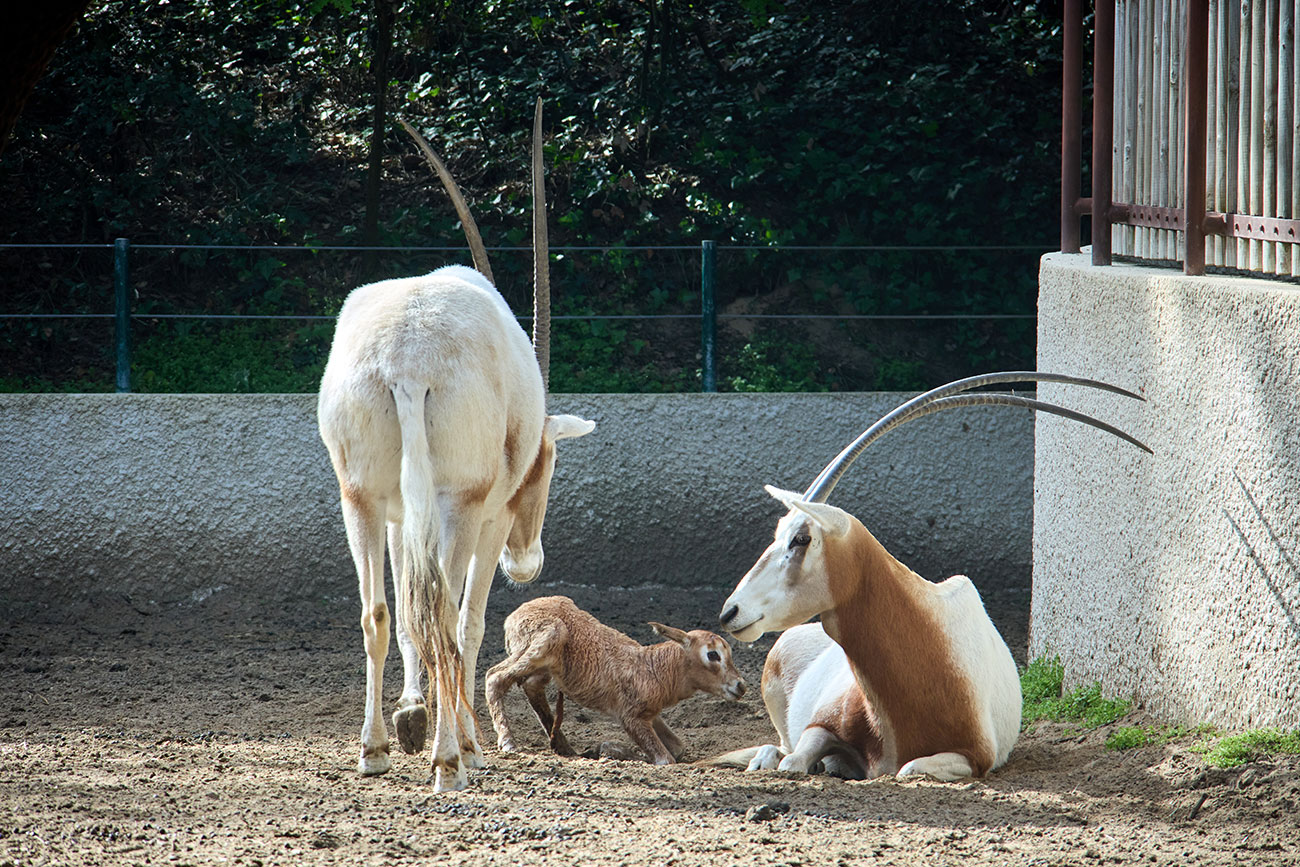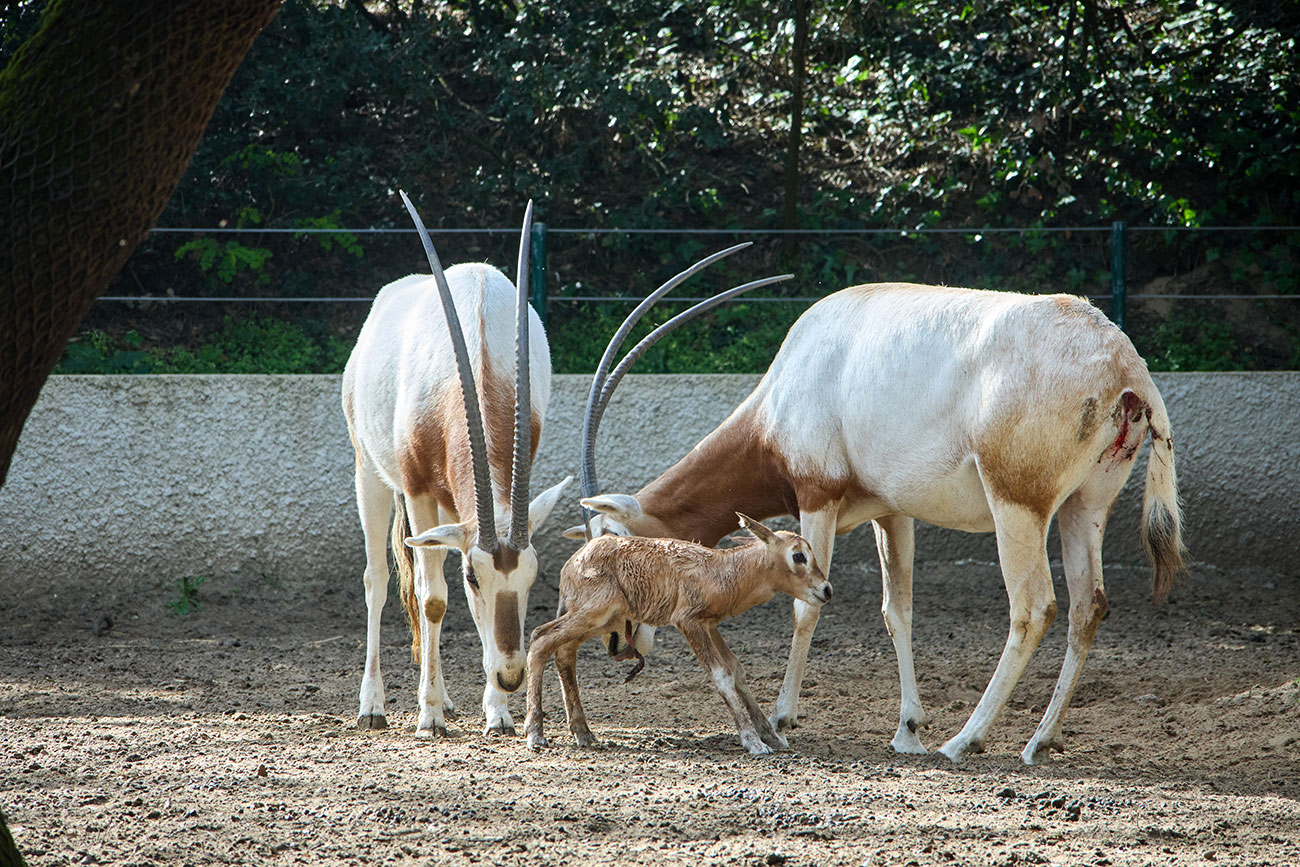Birth of a Scimitar-horned oryx

Our breeding group of Scimitar-horned oryx (Oryx dammah) numbers one more member with the birth of a male just a week ago! His 8-year old mother was born at the zoo and has had two calves before: a female in 2018 and a male in 2023.


Once roaming through all the sub-desert areas north and south of the Sahara, the Scimitar-horned oryx gradually became extinct in the wild due to excessive hunting and the loss of its habitat linked to overgrazing and competition with domestic livestock, exacerbated by severe periodic droughts.


An ambitious conservation plan was implemented to try to save this mighty antelope thanks to the existence of captive bred populations in zoological parks around the world. Reintroductions were carried out both in fenced reserves in Morocco, Senegal and Tunisia (with individuals born at La Palmyre Zoo sent there in the early 1990s) but also since 2016 in the Ouadi Rimé-Ouadi Achim Faunal Reserve in Chad, an open area where the oryx are protected by government rangers and monitored through radio tracking, aerial counts and ground patrols. Today the wild population of scimitar-horned oryx in this country stands at nearly 600 individuals.
A success for the species whose status on the IUCN Red List has been reclassified: at the end of 2023, it went from “Extinct in the wild” to “Endangered”.